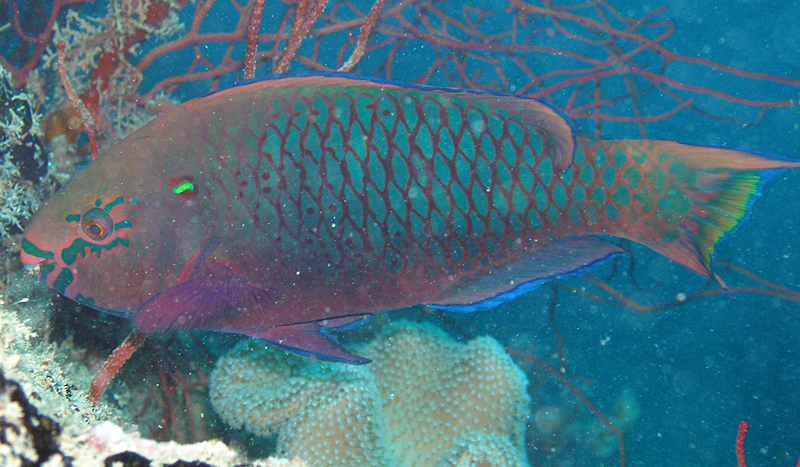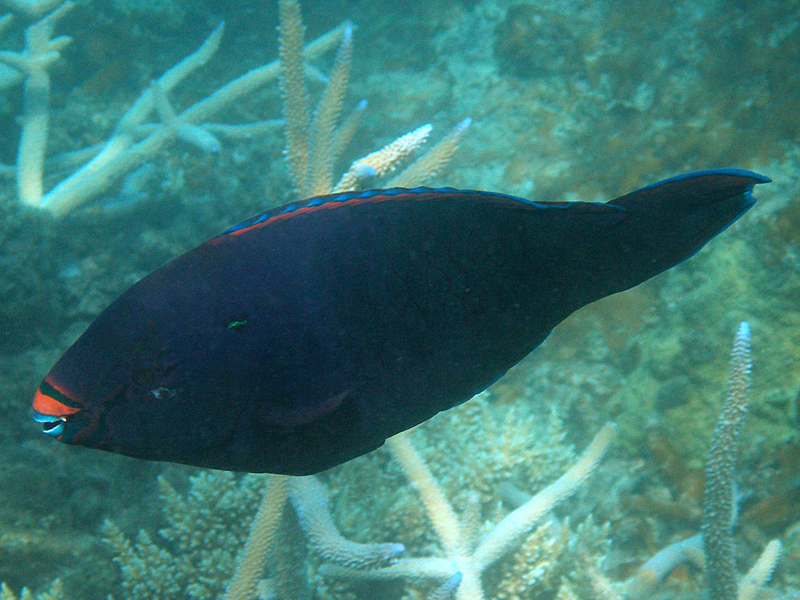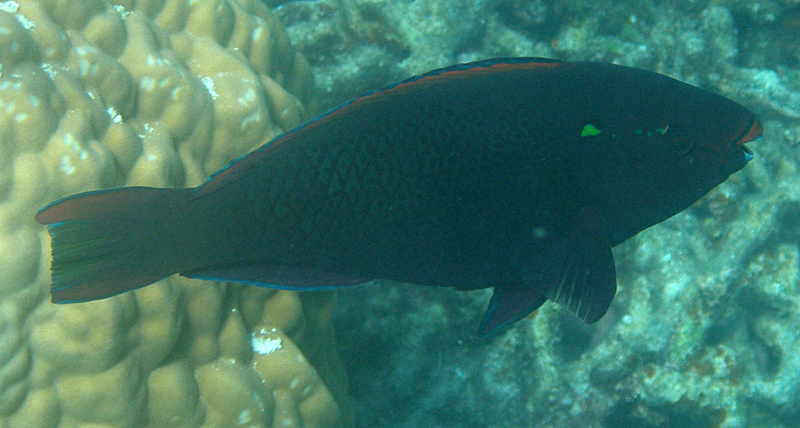
©Andy: An Initial Phase Swarthy Parrotfish photographed with flash at 10m depth at New Hanover, PNG.
Colours
Distinguishing features
A small to medium sized dark parrotfish, with a small green dot present behind the eye at all sizes. Initial phase fish are dark maroon, while terminal phase fish change to a deep purple-black. There is red above the upper jaw and along the margins of the dorsal and ventral fins and tail. Usually solitary.
Size
- Up to 40 cm (Standard length)
Depth range
- Depth range data is not yet available.
Synonyms
Distribution
Distribution and habitat preferences
Found in nearly all habitats, and favours areas with rich coral growth.
Found in most locations around the Island.
Behaviour
The Swarthy Parrotfish are usually seen as solitary individuals feeding on benthic turf algae in areas of good coral cover. This species is quite long lived, reaching 16 years of age around Lizard Island and 23 years on the outer shelf reefs. There are also other differences in the demography of this species between cross-shelf locations - population density at Lizard is 50% lower than at the outer barrier, however fish at Lizard grow faster, live longer, and suffer less mortality. Males maintain small harems of females and pair spawning takes place early and late in the day during the summer months. The newly settled juveniles are solitary and found hiding in areas of rich hard coral growth.
Web resources
References
- Choat, J.H., K.D. Clements and W.D. Robbins (2002). The tropic status of herbivorous fishes on coral reefs. 1. Dietary analyses, Marine Biology, 140: 613-623. LIRS catalog number 729.
- Choat, J.H., K.D. Clements and W.D. Robbins (2004). The trophic status of herbivorous fishes on coral reefs 2: Food processing modes and trophodynamics, Marine Biology, 145: 445-454. LIRS catalog number 1202.
- Choat, J.H. and D.R. Robertson (2002). Age-based studies on coral reef fishes in: Determine from the unstructured data. Determine from the unstructured data.. [Chapter 3 in "Coral Reef Fishes" ed. P. Sale, Academic Press] LIRS catalog number 1095.
- View all references



